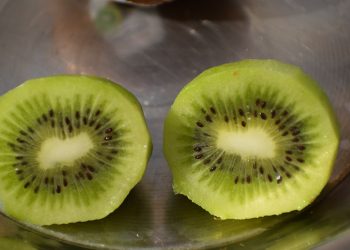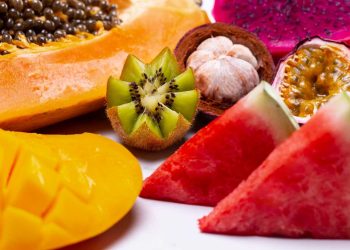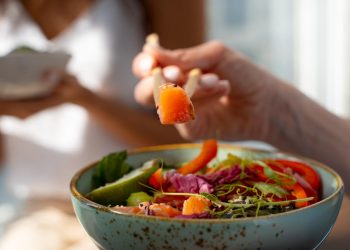Tendon elasticity foods are the dietary players that support the stretchy, resilient parts of your body that let you bend, leap, and reach without pain. They aren’t fad ingredients or glamour supplements. They are real foods that feed collagen, reduce inflammation, and help your tendons bounce back after strain. If you care about movement — walking without a wince, deadlifting with confidence, or simply getting out of a chair — this matters to you.
Tendon Elasticity Foods To Prioritize
Start here: think like someone who wants results. These aren’t vague nutrition ideas. These are foods proven to support connective tissue. When I say tendon elasticity foods, I mean whole items rich in collagen-building amino acids, vitamin C, healthy fats, and anti-inflammatory compounds you can eat every week.
Top 7 Tendon Elasticity Foods
Below I name the best seven, explain why they work, and give a quick how-to so you can add them to your life without fuss.
-
Bone Broth
Bone broth is concentrated, practical, and delicious. It delivers collagen, gelatin, and amino acids like glycine and proline that are the scaffolding for tendon repair. Drink it warm, use it as a soup base, or sip it on cold mornings. -
Fatty Fish (salmon, mackerel, sardines)
Omega-3s in fatty fish lower tendon inflammation. They help protect tissue from damage and aid recovery after workouts. Bake it, grill it, or toss into a salad. -
Citrus Fruits (oranges, lemons, grapefruit)
Vitamin C is a co-worker for collagen synthesis. Without it, your body can’t weave strong tendon fibers. Sprinkle citrus in salads, squeeze lemon on fish, or blend into smoothies. -
Leafy Greens (spinach, kale, Swiss chard)
These give you vitamin K, antioxidants, and magnesium — all supportive of connective tissue health. Sauté greens with garlic and olive oil for a fast side that protects your stretch. -
Nuts and Seeds (walnuts, flaxseed, chia)
Omega-3s and zinc in seeds and nuts improve tissue repair and reduce oxidative stress. Add them to yogurt, oats, or snack on a handful between meals. -
Eggs
Eggs provide high-quality protein and sulfur-containing amino acids (like cysteine) that help form disulfide bonds in connective tissue. They’re versatile and inexpensive — fry, poach, or scramble. -
Gelatin-Rich Foods (aspic, certain desserts, or supplements)
When consumed with vitamin C, gelatin can boost collagen formation. Use powdered gelatin in homemade gummies or to thicken stews.
Every one of these items qualifies as tendon elasticity foods because they supply the raw materials your tendons use to stay flexible and strong.
How These Foods Actually Work
You don’t need nutrition myths; you need mechanisms. Tendons are mostly collagen — a triple-helix protein that needs specific amino acids and vitamin C to form correctly. Foods that provide collagen precursors and reduce inflammation speed healing and improve flexibility.
Research from reputable medical centers shows that dietary patterns rich in omega-3s and vitamin C support tendon repair. You’ll find solid reporting on these effects at resources like the National Institutes of Health and major university health sites, which summarize clinical studies on nutrition and connective tissue.
Practical Ways To Add Tendon Elasticity Foods To Your Week
Change tastes easier when it’s simple. Plan two meals around these ingredients each day. Here’s a no-nonsense sample:
- Breakfast: Greek yogurt with chia seeds, walnuts, and a squeeze of citrus.
- Lunch: Salmon salad with mixed greens and orange segments.
- Dinner: Chicken bone-broth soup with leafy greens and a side of roasted eggs.
If you eat this way consistently, you’re stacking the odds in favor of more pliable, stronger tendons. That’s the real advantage of focusing on tendon elasticity foods — consistency yields results.
Timing And Pairing Matter
Pair gelatin or collagen supplements with vitamin C to maximize collagen production. Eat fatty fish on training days to blunt inflammation from hard sessions. Spread protein across the day so your body always has the amino acids needed for repair. These small habits amplify the benefits of your tendon elasticity foods.
How Much To Eat And When
You don’t need extreme doses. A daily serving of protein (about 20–30 grams at each meal) plus two to three servings of omega-3-rich foods per week will make a meaningful difference. Combine this with at least one source of vitamin C daily — think citrus, bell peppers, or strawberries — and you’re creating an environment where tendon health thrives.
If you’re recovering from a tendon injury, talk to a registered dietitian or sports medicine doctor. Clinical guidelines are evolving, and professionals can tailor a plan based on your age, activity level, and existing conditions.
Recipes And Simple Swaps
Small swaps make big returns. Replace a processed snack with a handful of walnuts. Swap soda for a warm cup of bone broth. Add lemon to salads and olive oil to roasted greens.
- Fast bone broth soup: Simmer bone broth with garlic, chopped spinach, shredded chicken, and a squeeze of lemon. Serve within 30 minutes.
- Omega-packed salad: Flake canned sardines over mixed greens, add orange quarters, chia seeds, and a drizzle of olive oil.
These meals are real, easy, and potent tendon-support tools — exactly what I mean by tendon elasticity foods that fit your life.
Evidence And Expert Voices
I believe in evidence, and you should trust proof. Clinical reviews published by university health centers and medical journals show that collagen supplements and targeted dietary changes can improve tendon properties and pain outcomes when combined with proper rehabilitation.
Look up research summaries from major institutions like the National Institutes of Health or the Mayo Clinic to see the studies. Practical experts in sports medicine also advise dietary strategies alongside exercise for the best outcomes.
Common Mistakes People Make
People expect a single superfood to fix everything. That’s not how tendons work. Tendon health is the result of a pattern: consistent protein, regular antioxidants, healthy fats, and sensible training load.
Avoid high-sugar diets, chronic NSAID overuse without guidance, and ignoring recovery. These habits undermine the benefits of tendon elasticity foods.
Bottom Line
Eat to support your movement. Choose bone broth, fatty fish, citrus, leafy greens, nuts and seeds, eggs, and gelatin-rich items. Make nutrient timing and pairing part of your routine. When you prioritize these tendon elasticity foods, you build resilience into your body — the kind that helps you stretch, bend, and live with less worry.
Be bold about your health. Start with one meal change this week and see how it feels. Your tendons will thank you.
Stay steady, keep moving, and feed your body what it needs.
FAQ
Can food alone repair a damaged tendon?
Food helps, but it’s not a magic fix. Nutrition provides the building blocks and reduces inflammation, which supports repair. For significant injuries, pair a targeted nutrition plan with physical therapy and medical guidance for best results.
Are supplements necessary if I eat well?
Not always. Many people can get enough from whole foods. Collagen supplements can be helpful in some cases, especially combined with vitamin C and exercise, but speak to a professional before starting anything new.
How long until I see changes in flexibility?
Tendon remodeling is slow. Expect weeks to months. With consistent dietary changes, the right rehab plan, and proper rest, many people notice reduced stiffness and better movement within a few months.
A visual line to close the piece and underline the importance of combining research with practical nutrition for lasting tendon health.
References
The National Institutes of Health provides comprehensive research summaries on nutrition and connective tissue, including studies on collagen and tendon healing (http://www.ncbi.nlm.nih.gov).
Harvard Health Publishing offers accessible reviews on the role of omega-3 fatty acids and vitamin C in inflammation and tissue repair (http://www.health.harvard.edu).
The Mayo Clinic outlines clinical guidance on tendon injuries and recommends evidence-based approaches that include nutrition and rehabilitation (http://www.mayoclinic.org).
The British Journal of Sports Medicine publishes peer-reviewed articles on dietary interventions and tendon health, which are useful for clinicians and athletes (http://bjsm.bmj.com).
Get Your FREE Natural Health Guide!
Subscribe now and receive our exclusive ebook packed with natural health tips, practical wellness advice, and easy lifestyle changes — delivered straight to your inbox.














